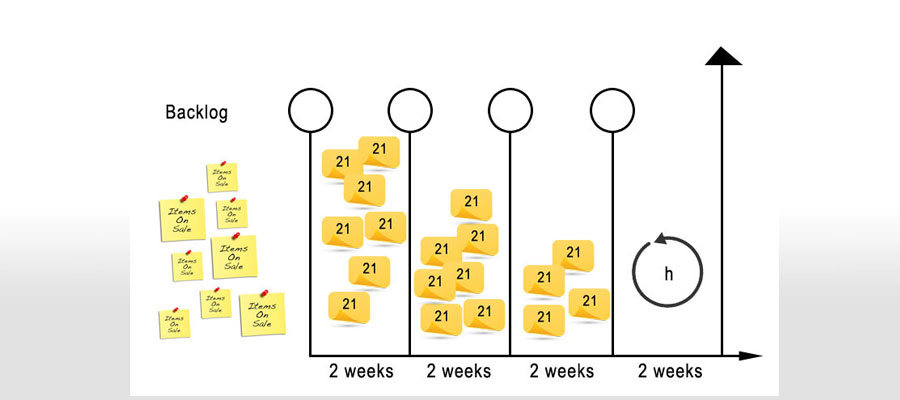08 RELEASE PLANNING
Release Planning Sessions are conducted to develop a Release Plan. The plan defines when various sets of usable functionality or products will be delivered to the Customer. In Scrum, the major objective of a Release Planning Meeting is to enable the Scrum Team to have an overview of the releases and delivery schedule for the product they are developing, so that they can align with the expectations of the Product Owner and relevant Stakeholders (primarily the project sponsor).
Many organizations have a strategy regarding release of products. Some organizations prefer continuous deployment, where there is a release after creation of specified usable functionality. Other organizations prefer phased deployment, where releases are made at predefined intervals. Depending on the organization’s strategy, Release Planning Sessions in projects may be driven by functionality, in which the objective is to deliver a release once a predetermined set of functionality has been developed; or the planning may be driven by date, in which the release happens on a predefined date.
Since Scrum framework promotes information-based, iterative decision making over the detailed upfront planning practiced in traditional waterfall style project management, Release Planning Sessions need not produce a detailed Release Plan for the entire project. The Release Plan can be updated continually, as relevant information is available.

Figure: Backlog, 2 weeks, 2 weeks, 2 weeks, 2 weeks, Release
8.2 Release Prioritization Methods
Release Prioritization Methods are used to develop a Release Plan. These methods are industry and organization specific and are usually determined by the organization’s senior management.
A Release Planning Schedule is one of the key outputs of the Conduct Release Planning process. A Release Planning Schedule states which Deliverables are to be released to the Customers, along with planned intervals, and dates for releases. There may not be a release scheduled at the end of every Sprint iteration. At times, a release may be planned after a group of Sprint iterations is completed. Depending on the organization’s strategy, Release Planning sessions in projects may be driven by functionality, in which the objective is to deliver once a predetermined set of functionality has been developed, or the planning may be driven by date, in which case the release happens on a predefined date. The Deliverable should be released when it offers sufficient business value to the Customer.
Based on the various inputs including business requirements and Release Planning Schedule, the Product Owner and the Scrum Team decide on the Length of Sprint for the project. Once determined, the Length of Sprint often remains the same throughout the project.
However, the Length of Sprint may be changed if and when the Product Owner and the Scrum Team deem appropriate. Early in the project, they may still be experimenting to find the best Sprint length. Later in the project, a change in the Length of Sprint normally means it can be reduced due to improvements in the project environment.
A Sprint could be time-boxed for from 1 to 6 weeks. However, to get maximum benefits from a Scrum project, it is recommended to keep the Sprint time-boxed to 4 weeks, unless there are projects with very stable requirements, when Sprints can extend up to 6 weeks.
8.5 Target Customers for Release
Not every release will target all Stakeholders or users. The Stakeholder(s) may choose to limit certain releases to a subset of users. The Release Plan should specify the target Customers for the release.
8.6 Refined Prioritized Product Backlog
The Prioritized Product Backlog, developed in the Create Prioritized Product Backlog process, may be refined in this process. There may be additional clarity about the User Stories in the Prioritized Product Backlog after the Scrum Core Team conducts Release Planning Sessions with Stakeholder(s).
